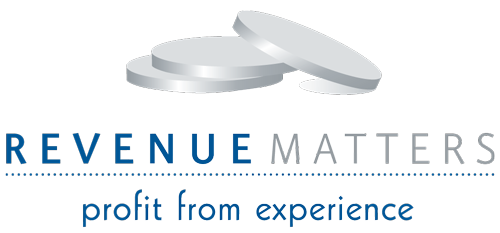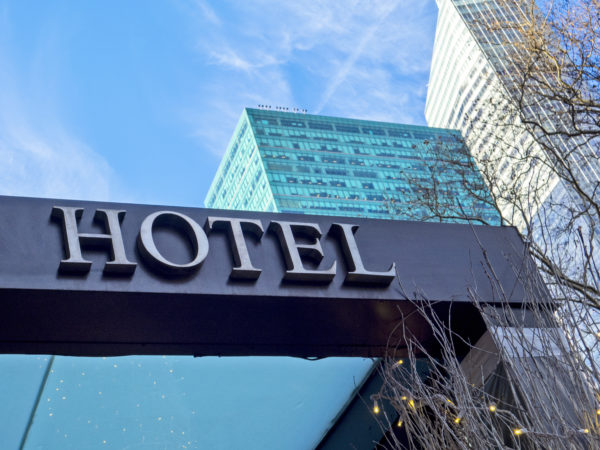
The hotel industry, in virtually every global market, has recovered from the sharp downturn of 2008 and 2009. In the US market, during the first half of 2014, room demand was up 4.2% and room revenue was up 8.6%. Randy Smith of Smith Travel Research (STR) states, “The surge in demand we witnessed during the summer of 2014 even caught us by surprise…and it certainly is nice to be pleasantly surprised.” So why is now a good time to harvest the value that revenue management can bring to the table? The answer relates to the cyclical nature of our business, combined with mounting pressure on profitability.
A Global View
According to Aron Gampel, vice president and deputy chief economist at Scotiabank, gross domestic product (GDP) globally is growing at approximately 3.4% on average. While this isn’t dramatic by any stretch, it, along with very modest supply growth in most markets, has been enough to positively impact hospitality industry key performance indicators.
Of course, as would be expected, some regions are performing better than others. Brazil and the Eurozone, for example, are teetering on the brink of a recession, but according to Gample “still have some momentum potential through structural adjustments and economic stimulus initiatives.” Manufacturing output in Germany (Europe’s strongest economy) has slipped, France, UK and Netherlands economies are relatively stagnant and concern is mounting relative to a recessionary trend in Portugal, Italy, Greece and Spain.
Industry pundits, while hesitant to precisely predict the peak of the current cycle in the US, generally anticipate that we will experience a few more years of positive demand fundamentals before experiencing the inevitable downturn. US consumers and companies have become somewhat inoculated to threats of terrorism and news of pandemic outbreaks, so it is not anticipated that these will have a deep or sustainable effect on travel in the short term.
So, What’s the Problem?
Despite reports of positive (and historically unprecedented) revenue performance, profit growth in the hospitality industry is lagging. In addition, industry demand fundamentals should theoretically have resulted in far stronger average daily rate (ADR) performance than what has actually been realized. Both of these issues have limiting effects on asset value growth.
Owners and Asset Managers should recognize that threats to profitability in the upturn phase of this cycle could prove to be devastating in the downturn.
Hard costs related to property insurance, employee compensation, health care, energy and brand-associated fees have all risen (in some cases dramatically), plus there is a downward rigidity associated with these costs. Since most of the RevPAR gains in recent years have come from the occupancy side of the equation, variable costs have increased disproportionately.
Perhaps one of the most difficult costs to quantify, and therefore the most alarming, is the cost of intermediation. Cindy Estis Green, CEO of Kalibri Labs, highlights this point by comparing the hospitality industry to adjacent industries in the travel space, “cost of customer acquisition for hotels is around 15-25% whereas airlines are in the 3-6% range and car rentals hover around 4-6%.” She went on to say, “Several years ago, airlines were facing customer acquisition costs that approached 15% and they had near-death experience as a result.”
Cost of Sale is a valuable metric, but this is not readily detected on today’s P&L statements—it has to be fabricated independently and there currently aren’t any industry guidelines to govern how this is to be accomplished. Complicating matters is the myriad of business models adopted by intermediaries which incorporate margins, mark-ups, commissions, listing fees, advertising trade, cost per action and cost per click (or some combination of the above) as their form of remuneration.
Lackluster ADR Growth
Considering that in the first half of 2014, US room supply is up just 0.8%, while demand is up 4.2% and evidence points to its continued acceleration, a 4.3% growth in average daily rate (ADR) represents a paltry 90 basis points improvement over growth in GDP. In addition, according to STR, new supply this year has been in the upscale segments with upper upscale, upscale and upper midscale representing a 4.8% average increase, as compared to midscale and economy’s 3.7%. Given the healthy demand profile for the industry, this shift in lodging segment supply should have a net positive effect on overall ADR performance.
Historically, ADR changes lag changes in demand, both in up-cycles and in down-cycles. This is due primarily to contract, negotiated and group business that is typically quoted well in advance and is then consumed within whatever the current demand cycle happens to be. Heading into 2014, operators were optimistic and transient business was anticipated to be stronger than it had been in the past. While the group base was down, early signs indicated that it would also recover–which it has in most markets. This put hoteliers in a superior negotiating position.
Despite the above healthy fundamentals, something else is clearly moderating ADR performance.
Historically, the longest period of sustained RevPAR growth has been ten years (1991 – 2001), with five-year cycles being the typical average. We are now five years into the current cycle. Now is a perfect time to take action to drive profitability and asset value.
How Can Revenue Management Help?
Unfortunately, the term “revenue management” is horribly overused in the hospitality industry today. It has become a buzzword used to describe all sorts of activities that are not core to the discipline itself, or worse, it’s used to describe actions related to a single activity such as pricing or perhaps distribution. In its truest form, revenue management is best defined as a business process designed to optimize the revenue performance of an asset through all market conditions. Establishing a solid approach to revenue management now will help you to capitalize on current favorable conditions and ensure success during the downturn.
While revenue management practitioners may differ in their approach, there are some associated functions that most would agree apply. These relate to the following basic building blocks:
- Tracking – data collection and analysis
- Forecasting – using data to predict the future
- Pricing – optimizing rate by customer segment
- Availability Management – governing availability of products/services based on anticipated demand
- Distribution – determining when, by whom and under what circumstances certain products will be sold
- Communication – reporting results and ensuring operational alignment
The responsibility of optimizing revenue performance sits squarely on the shoulders of revenue management practitioners. Generating customer interest and revenue opportunity for a property is created through sales and marketing efforts. Adopting an approach whereby these activities are separated isn’t usually very effective in the long term. In fact, those in a revenue management role today actively contribute to creating revenue opportunities – which, if done correctly, translates to enhanced profitability for the asset.
Asset managers and owners often make the mistake of putting pressure on their properties to “drive rate”. What they really mean to say is “drive ADR”. There is a difference–and it’s a HUGE one! Pricing is an input whereas ADR performance is an output resulting from a myriad of influences and actions.
Driving rate by simply raising published rates absolutely can work in some instances, but just as often, this action can result in negative ADR performance. For example, by “driving rate,” a particular property may be “driving away” potential guests willing to pay a retail price that is within their reach at a competitor. This leaves unsold inventory available for guests paying a fixed, discount or lower negotiated rate at the subject property. Often, a last minute “dump” of inventory through highly discounted channels evidences this. If this is happening at your property, your pricing structure and deployment strategy may need a rework.
In the context of the revenue management business process described above, ADR growth will more likely come from three distinct activities: 1) making adjustments to customer market segment contribution, 2) effectively leveraging available inventory and 3) through shifting channel mix to more profitable channels.
On that note, keep in mind that your booking engine may not actually be your most profitable channel, as is widely touted. Your revenue manager can provide you with an analysis on channel contribution and costs. Be certain they include all costs beyond just the transaction fee.
A Customer-Centric Approach
Of course, revenue isn’t created until someone pays. Long-term financial viability comes when someone–in our case, guests–gladly pay for our offerings. There are a multitude of substitute accommodation choices available from traditional accommodations to emerging “sharing economy” options such as Airbnb, VRBO, Homeaway and others. This means that hoteliers need, more than ever before, to ensure their offerings are genuinely on point with guests’ needs and expectations.
Certainly a guest’s physical experience during his or her stay is important. Factors such as service responsiveness, engagement (technology enabled or otherwise), environmental control, esthetics and utility should be well thought through, but there are non-physical elements that need to be considered also.
For example, the reason airlines can get away with “unbundling” service offerings, is because demand is comparatively inelastic amongst a handful of servicing carriers for any given city pair, but the majority of travelers today believe that this approach has gone too far. Personally, I do prefer to avoid a middle seat, normally carry a suitcase (sometimes it’s even a bit heavy), always bring a laptop and tablet wherever I go and like to remain hydrated on longer flights. I’d also like to make a reservation with an airline that recognizes my needs and seamlessly in a single transaction, allows me to compare options and then pay a single fare that includes everything I am looking for. Call me a dreamer.
In the hospitality industry, we need to ensure that our policies, pricing schemes, online presence, guest engagement practices and promotional activities are genuinely customer centric. While driving “customer-centric profitability” may seem like mixing mutually exclusive objectives, for talented hospitality revenue management professionals, this is a single approach that comes naturally. And, if it sounds a lot like we’re talking about marketing here, we are.
Now is the ideal time to take action. Sharpening your approach to drive profitability now while demand is strong will help to sustain you during the next downturn–whenever that may be.
This article was first published on Hotelexecutives.com



